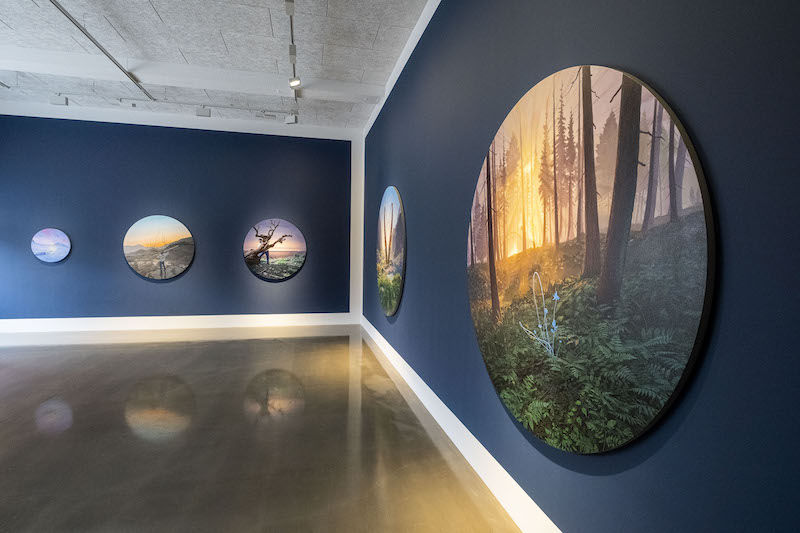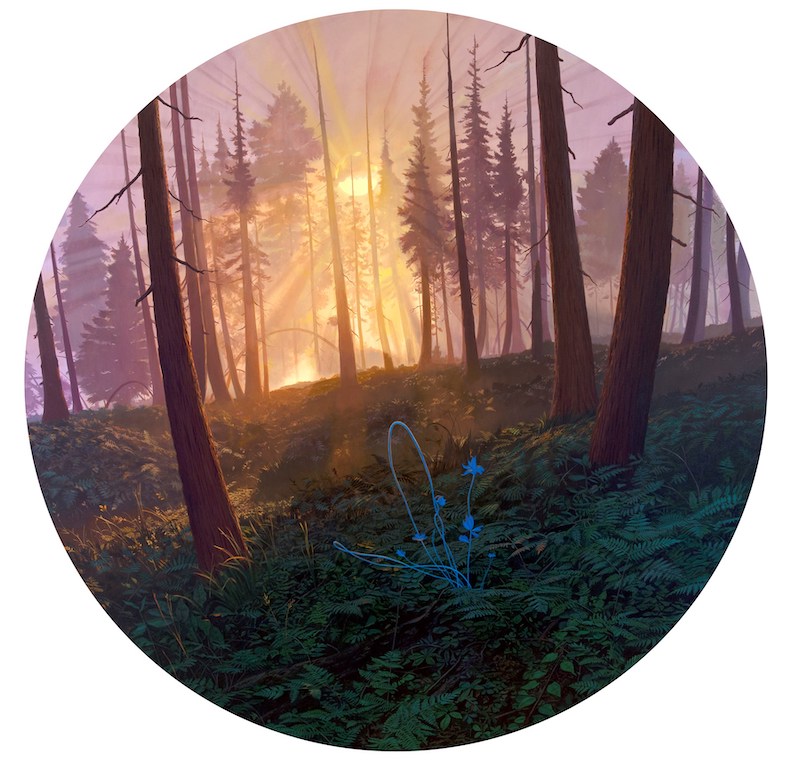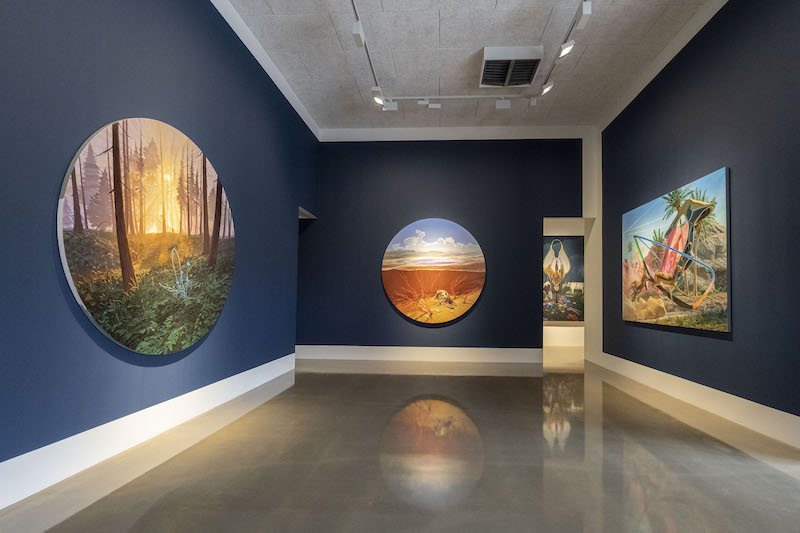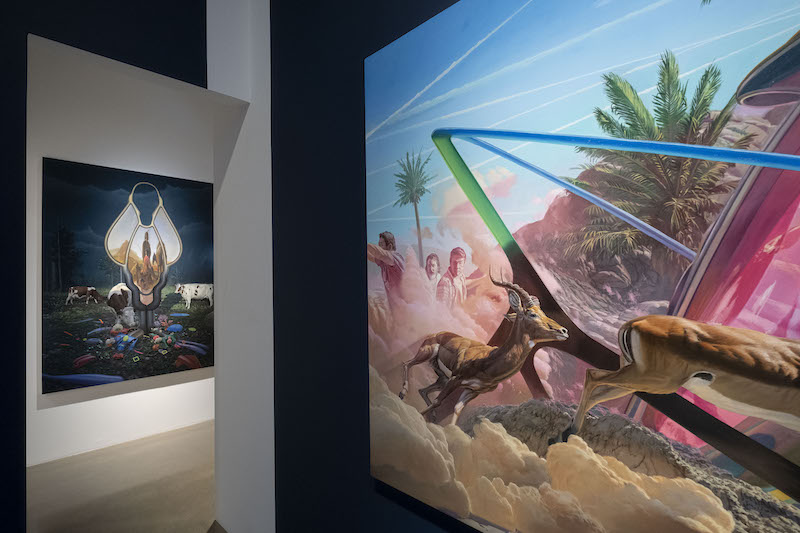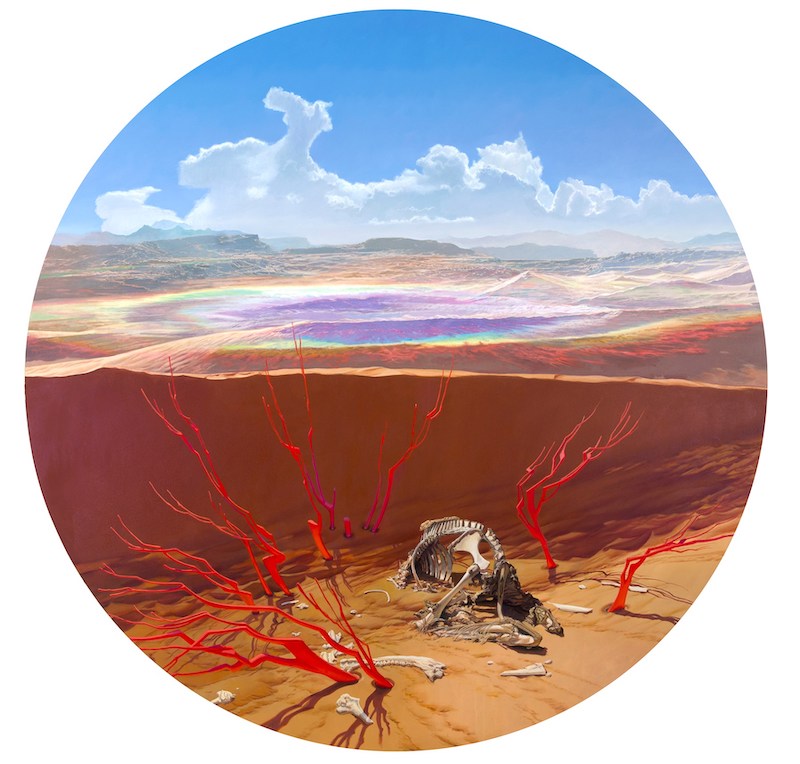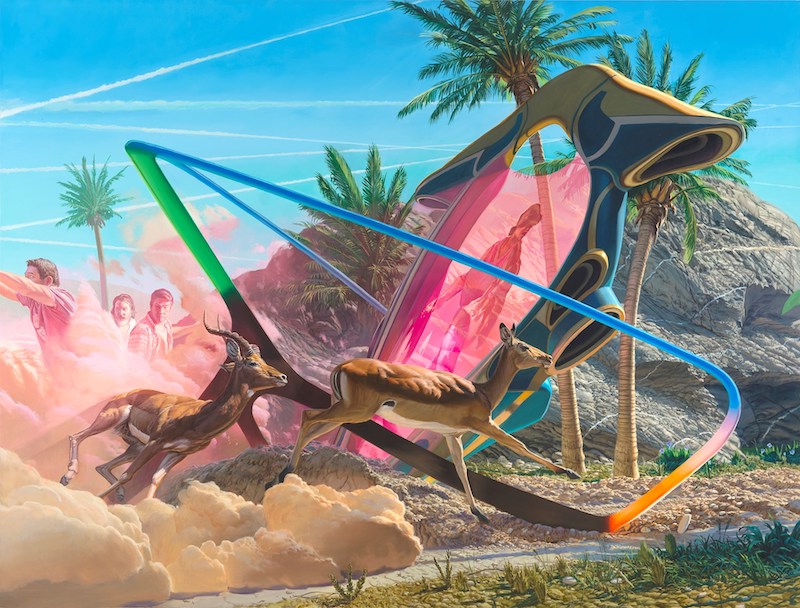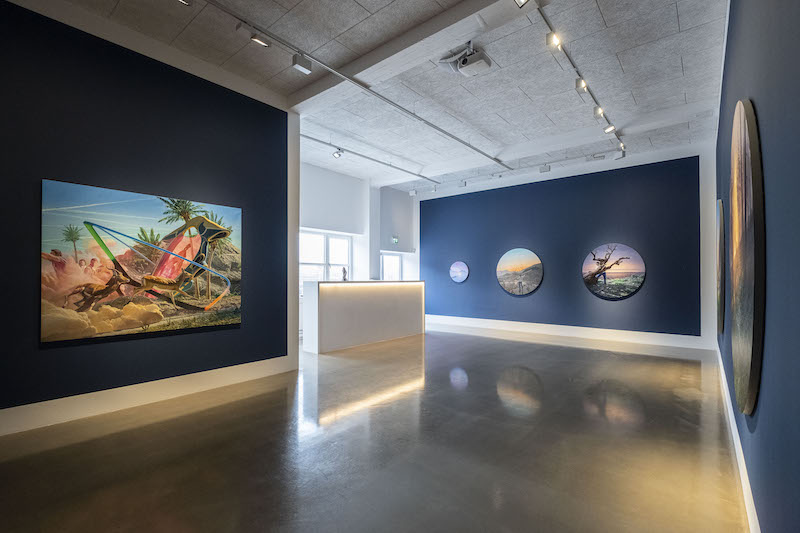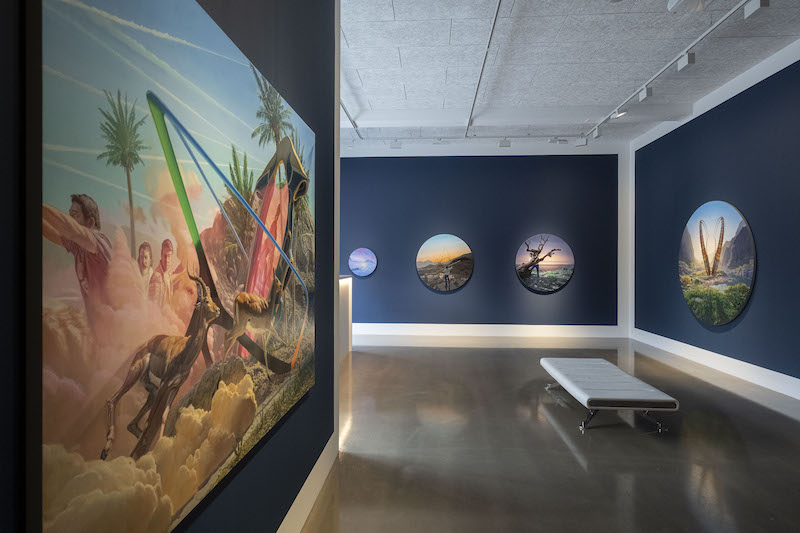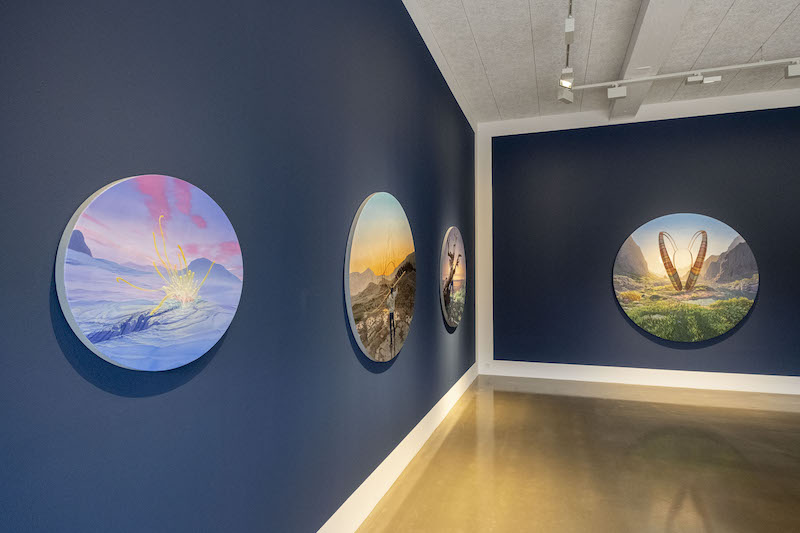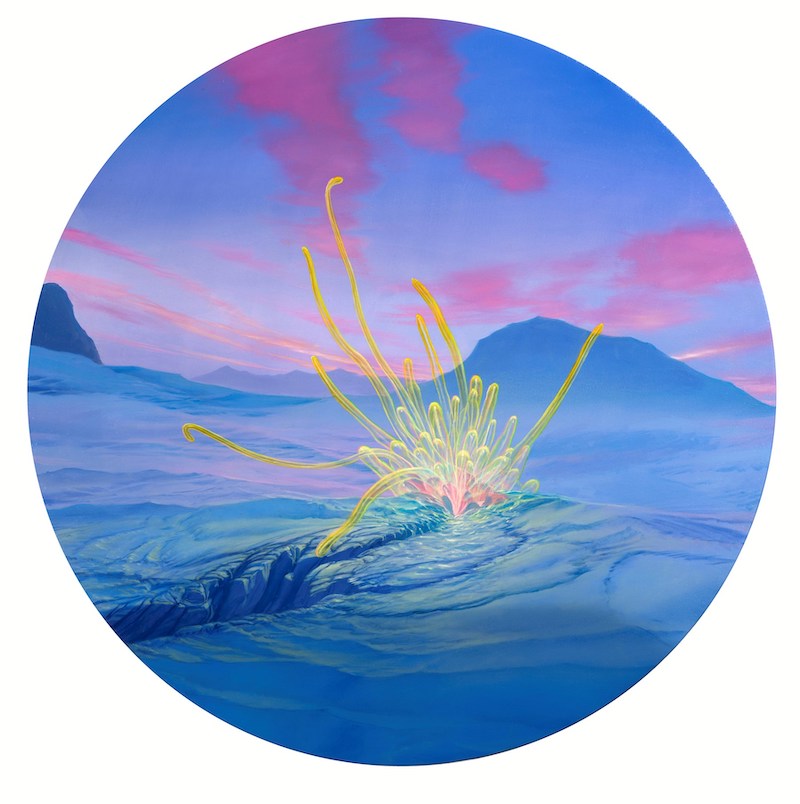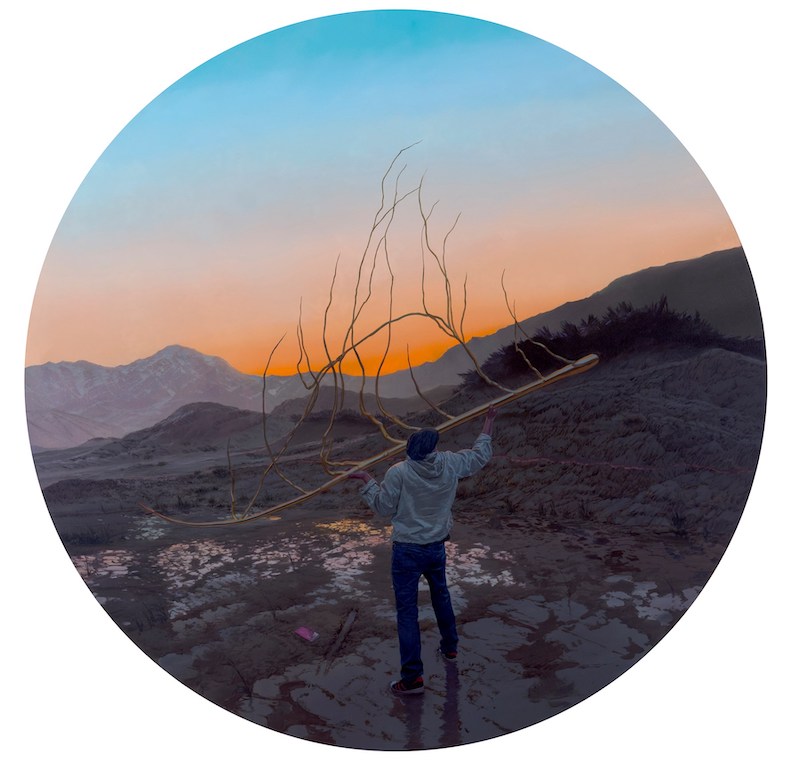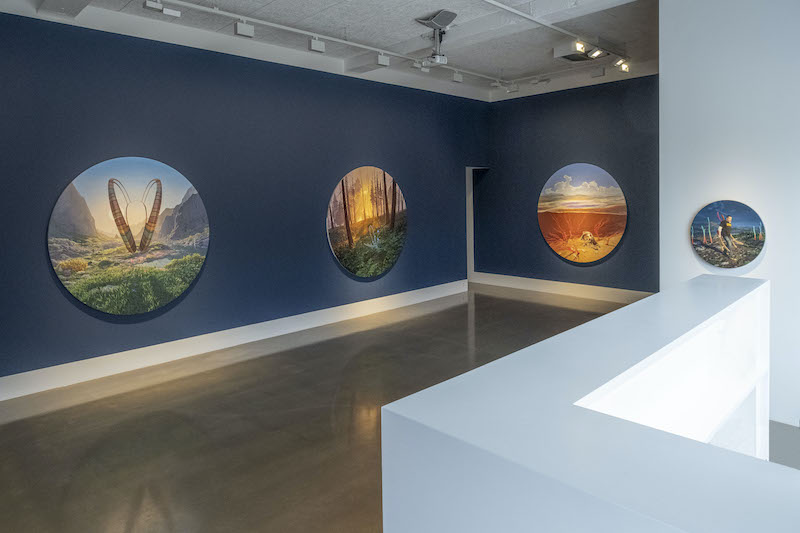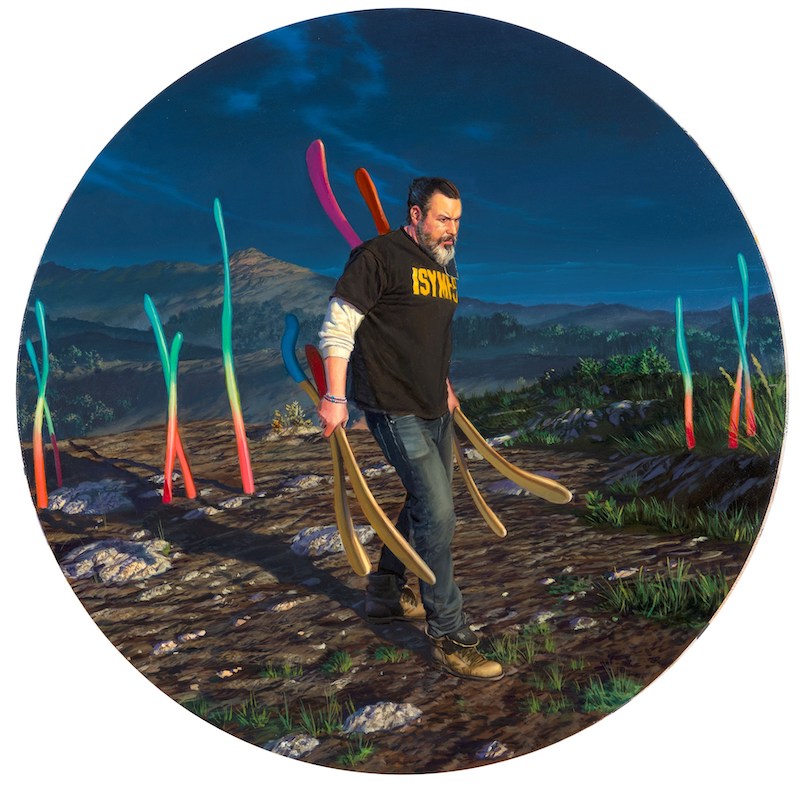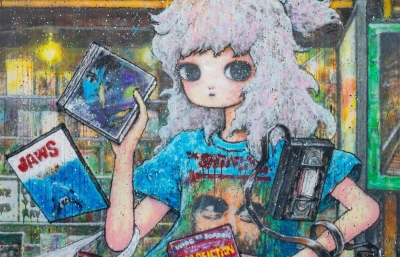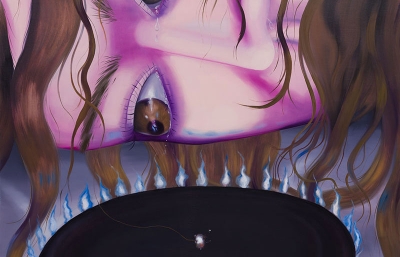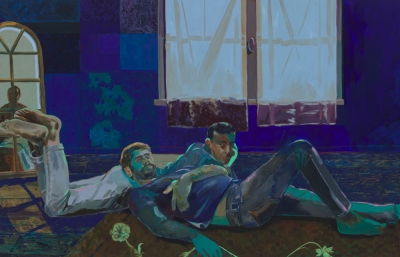During the past year, we've seen visuals that seemed unimaginable only a few years ago, which probably shifted our bar that sets reality from the surreal. From deserted streets of the world's biggest cities to unthinkable crowds at places where you wouldn't expect them, it feels as if our eye and mind got trained to believe, or doubt, any unusual visual we might be experiencing. And with this in mind, Jean-Pierre Roy's third solo exhibition with Gallery Poulsen in Copenhagen, and arguably one of his most striking presentations, becomes an exciting challenge for our perception and our logic circuit.
Now running its final week, Come Up From This opened on March 6th celebrating the arrival of spring and the return of the light, in both physical and metaphorical sense. Presented in the Danish capital in the North of Europe, a region where the sun sets earlier/later than the other parts of the world, these light-imbued paintings present a candid view at an alternate world which the NY-based artist often depicts in his work. And we say "candid view" cause most of the works in the show are painted on a round, tondo format, creating an illusion of peeking at these distant places through a peephole. This concept might be an extension of the #previewpeephole posts, that Roy is frequently posting on his Instagram, but with the addition of dark blue tinted walls, the show is certainly transcending the viewer into places unknown.
And while his previous body of work regularly depicted human subjects interacting with somewhat unearthly objects and achieving unfamiliar effects, the new body of works marks a focus on a landscape, mostly stripped of any human presence. With the addition of unknown plant or coral-like organisms, the works serve as artist's way to "examine contemporary anxieties around the human condition and the spaces we inhabit." In a way glorifying the strength of nature which is thriving and modifying regardless of our struggles, the imagery is oscillating between the Utopian and the Dystopian. On one hand, we see scenes with animal skulls buried in the sand, or images of Roy himself lonely roaming the deserted terrain, suggesting a post-apocalyptic scenario. Yet again, the other works are portraying a more lively enviornment, covered by familiar vegetation in which alien-like forms are blooming or taking over. Accentuated with bright, otherwordly, often glowing hues, and captured inside a vivid play between the light and shadow, these images argue the existence of harmonious beauty, even in such, for humans dark scenarios.
Expertly utilizing the qualities of oil as his technique of choice, Roy's landscapes are characterized with the most unlikely, yet plausible sky settings, tones, and gradients. Whether depicting a scorching desert heat in The Weather Eater, 2021, capturing polar dusk in Laryngospasm, 2021, or suggesting the warmth of morning rays waking up the forest in To Tend to It Nonetheless, 2021, it's the real elements of the scenery that makes these visuals so unbelievably beautiful and peaceful. The addition of unknown ecologies are only accenting such a beauty and the sight of the artist himself interacting with them in An Application of Stored Self, 2021, or Candle Fracture, 2021, serves as a relatable metaphor and motivation for human survival and adaptation. —Sasha Bogojev



